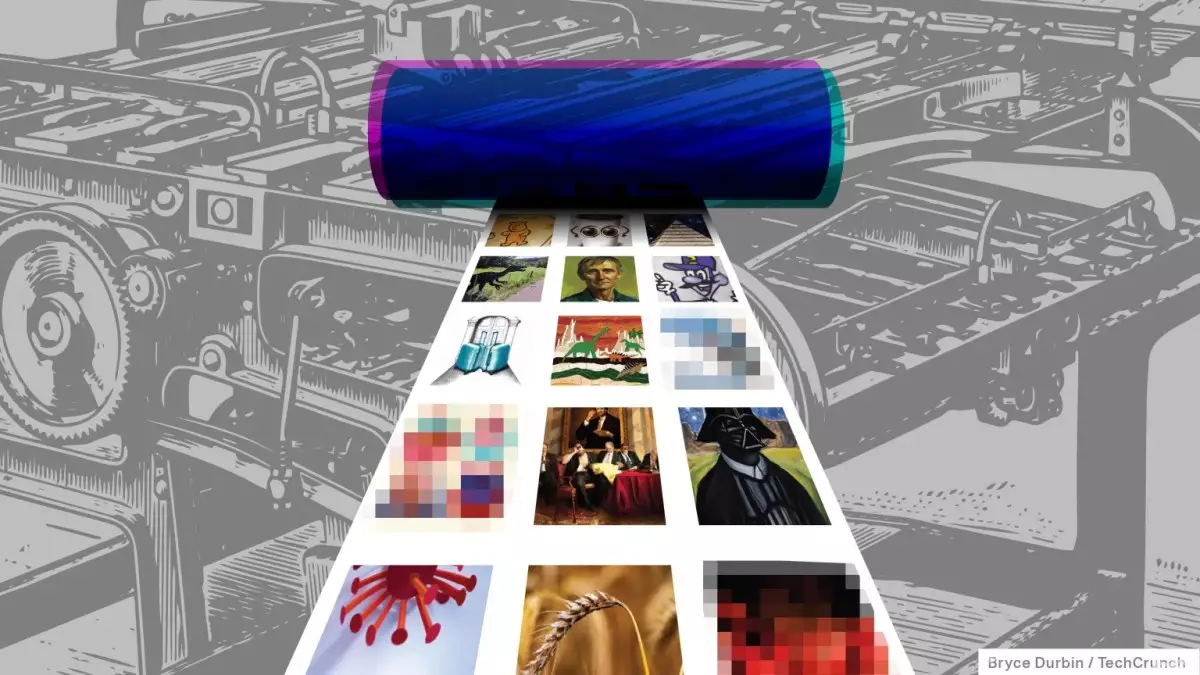In a landscape increasingly dotted with ethical dilemmas and technical missteps, AI startup Stability AI has made headlines with its recent unveiling of the Stable Diffusion 3.5 series. This lineup comes on the heels of a series of high-profile controversies, addressing the dual challenges of functionality and responsible use. The announcement has piqued the interest of developers, artists, and businesses alike, as it promises advancements in customization, speed, and performance.
The new series includes three distinct models: Stable Diffusion 3.5 Large, Stable Diffusion 3.5 Large Turbo, and Stable Diffusion 3.5 Medium. Each model is tailored for different user needs and performance expectations.
The flagship model, Stable Diffusion 3.5 Large, boasts a staggering 8 billion parameters. Such a robust architecture enables it to generate images at a maximum resolution of 1 megapixel, positioning it as the powerhouse of the series. Parameters can be likened to cognitive capacity; thus, higher numbers typically correlate with improved functionality and creativity.
The second model, Stable Diffusion 3.5 Large Turbo, is a distilled, speed-focused version that sacrifices some image quality for faster processing times. This trade-off primarily targets users who prioritize speed over fidelity, reflecting a growing trend in AI applications where time efficiency is critical.
Lastly, the Stable Diffusion 3.5 Medium model caters to edge devices like smartphones and laptops. It accommodates a range of resolutions from 0.25 to 2 megapixels, ensuring that users without access to powerful hardware can still generate compelling visual content. This democratization of technology aligns with modern expectations for accessibility and usability.
Stability AI claims that the new series will produce more diverse outputs, aiming for representation across various demographics without requiring extensive prompting from users. This commitment to inclusiveness emerges as a response to prior criticisms faced by AI image generators, such as those from Google.
Stability’s Chief Technology Officer, Hanno Basse, has emphasized the model’s training methodology, stating that multiple prompts are used to caption images, prioritizing shorter prompts. This approach aims to capture a wider array of visual concepts for an individual text description, which might mitigate the often-noted pitfalls in earlier models, where biases and inaccuracies were rampant.
Despite these assurances, the efficacy of these improvements will only be evident post-implementation. The lessons learned from failed attempts by other companies underline the critical importance of maintaining a vigilant and iterative design process to deliver on such ambitious promises.
Licensing has emerged as another contentious area for Stability AI. In its latest announcement, the company maintains that its models will remain freely available for non-commercial uses, including academic research. Business entities with annual revenues below $1 million can utilize these tools without incurring costs, which is a significant move towards fostering innovation among smaller firms.
However, companies with larger revenues must negotiate enterprise licenses, drawing mixed reactions from the market. Stability AI’s earlier controversial terms regarding the fine-tuning of images brought about significant backlash, prompting adjustments in their licensing approach to accommodate more liberal commercial uses. Nonetheless, this business model continues to spark conversations about ownership and rights, particularly as it relates to artists whose work may influence generative outputs.
The insistence that creators must credit Stability AI in their distribution channels reaffirms concerns about the fine line between collaboration and exploitation. Clear frameworks and ethical guidelines will be essential moving forward, ensuring that mutual respect underpins the relationship between AI providers and content creators.
The persistent specter of copyright infringement looms large over the AI sector. Stability AI, like many of its peers, justifies its data sourcing under the fair-use doctrine while simultaneously confronting mounting legal challenges from aggrieved data owners. Artists have already removed millions of images from the training datasets, reflecting rising tensions in the creative community.
While Stability AI allows data owners to request the removal of their work, it places a heavy burden on its users to navigate potential copyright claims. This could create a precarious situation for customers who rely on the tech for creative output while facing legal uncertainties in a stormy intellectual property landscape.
Additionally, in light of potential misinformation during significant events such as the upcoming U.S. elections, stability has assured that it is taking steps to curb misuse of its technology. However, the specifications of these measures remain vague, which may raise further questions about accountability in an increasingly complex societal context.
The Road Ahead: Looking Beyond the Launch
While the introduction of the Stable Diffusion 3.5 series presents an exciting opportunity for AI advancement, the overarching ethical and legal concerns will continue to shape the discourse around Stability AI and its competitors. As technology evolves, so too must the frameworks that govern its use, ensuring that the tools of creation empower rather than hinder.
Ultimately, the success of Stability AI’s latest models will depend not only on their immediate performance but also on the company’s ability to navigate the intricate balance between innovation, responsibility, and collaborative creativity. Only time will tell if Stability can walk this line effectively and earn the trust of its users and content creators alike.


Leave a Reply